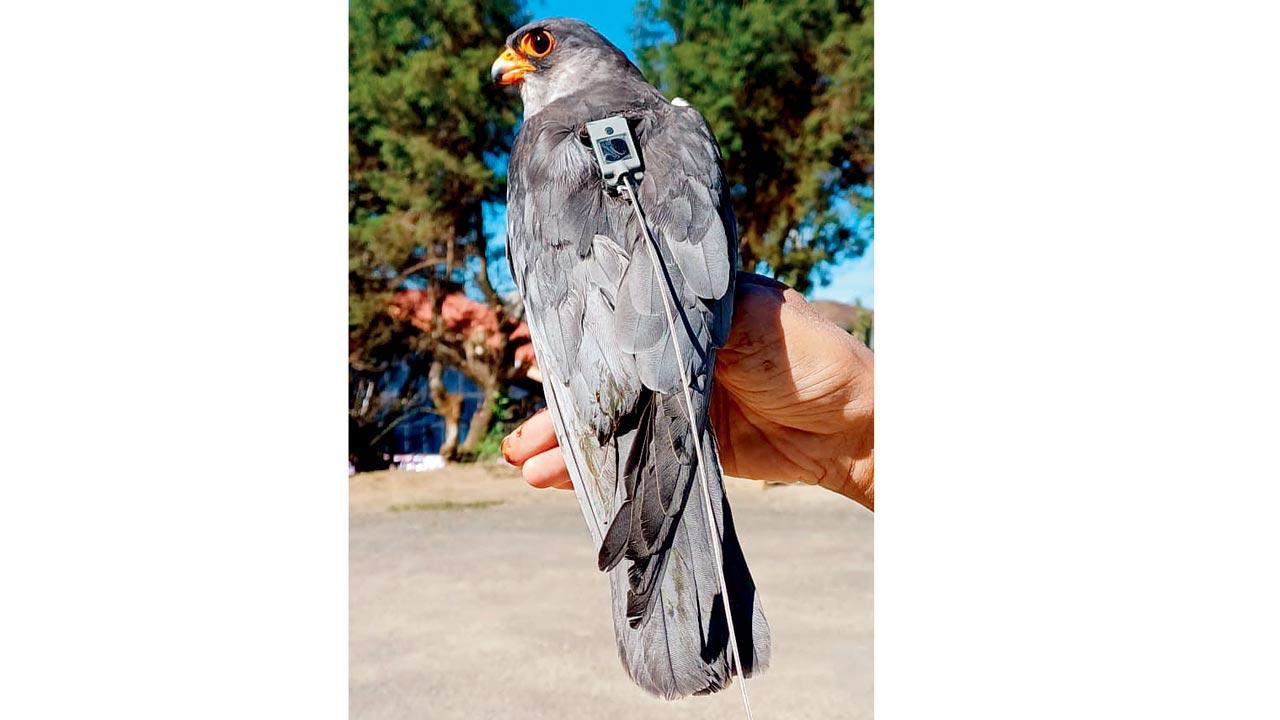Satellite-tagged Amur Falcons, are part of study to track migratory routes of these birds; Amur falcon ‘Chiuluan 2’ was tagged by Manipur’s forest division

The Amur falcon was tagged last year in November
After wintering in Botswana in South Africa, the famous satellite-tagged Manipur Amur Falcon, Chiuluan 2, has taken off his return non-stop journey of about 3000 km over the Arabian Sea back to India.
Dr Suresh Kumar, senior scientist at the Wildlife Institute of India (WII), told mid-day that Chiuluan 2 is following the predicted path, and at this rate, the falcon is expected to arrive along the Gujarat coast by April 28. Its fascinating journey has surprised researchers and wildlife lovers.
“Chiuluan 2 is flying fast. Fueled by tailwinds, the male falcon has been flying at a speed of 47 km/hr and flying non-stop for 21 hours and has covered 1000 km from its last location (on Friday),” said Dr Kumar.

In November last year, two Amur falcons—Chiuluan 2 and Gwangram (female)—were fitted with satellite transmitters and released into Chiuluan village in Manipur’s Tamenglong by the local forest department in the presence of Divisional Forest Officer (DFO) Kh. Hitler Singh and Dr Kumar. The local forest department also fitted several other Amur falcons with identification rings and released them. The main objective of the project is to study the migratory route of these birds.
DFO Singh from the Manipur forest department told mid-day that in the past, the Tamenglong forest division had done Phase-I satellite transmitter tagging of Amur falcons during 2018 and 2019. “We collected very important migration information in Phase-I. The migration studies not only equipped the scientists and forest department for a long-term conservation plan of wildlife, but they also generated wide-ranging awareness among local communities and wildlife lovers all over the world. That was a great achievement.”
Migratory species conservation needs support from many nations. India is also a signatory country to CMS (Convention of Migratory Species).
It may be noted that Manipur’s Tamenglong forest division is planning to tag a few more Amur falcons next year to further strengthen the database and create more national and international awareness of the fascinating and ecologically important bird species.
Amur falcons migrate from breeding grounds in eastern Asia to wintering grounds in Southern Africa. To fuel up for their big open-water crossing, which is the Indian Ocean, they stop over for two months in Doyang Dam Reservoir, Nagaland. The bird covers over 20,000 kilometres between Africa and northern China, flying over the Arabian Sea.
 Subscribe today by clicking the link and stay updated with the latest news!" Click here!
Subscribe today by clicking the link and stay updated with the latest news!" Click here!








